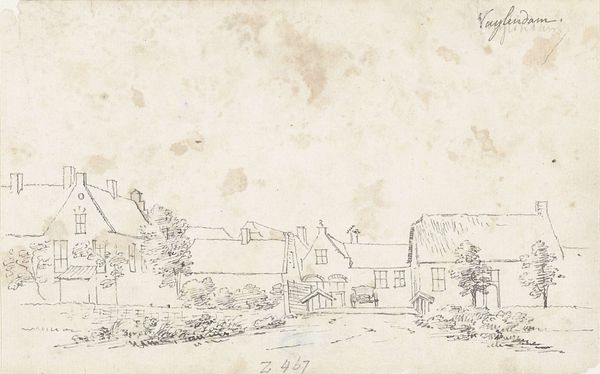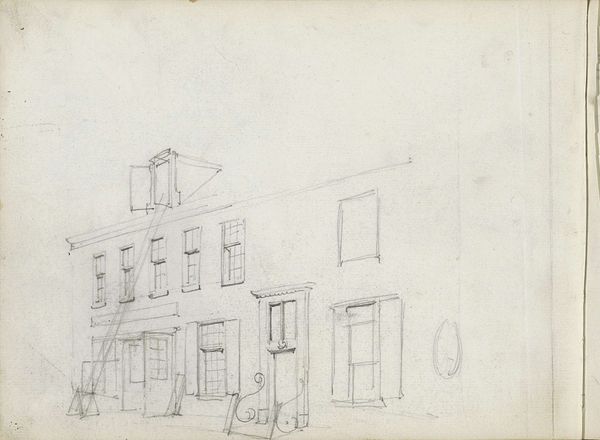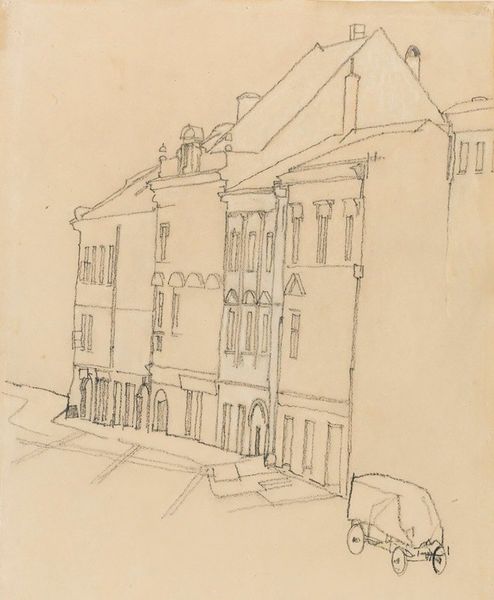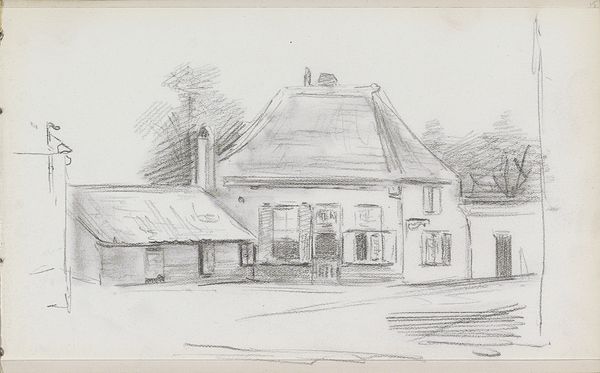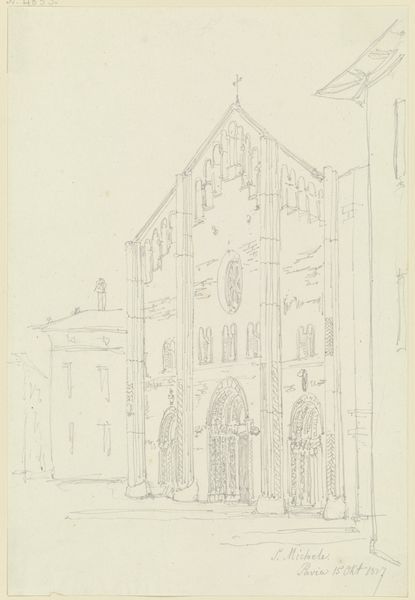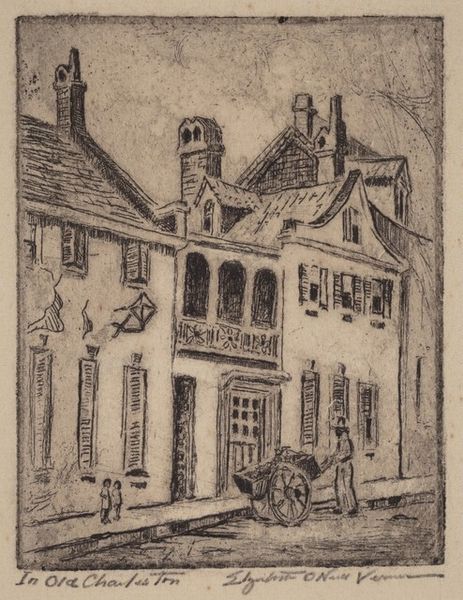
drawing, pencil
#
drawing
#
landscape
#
etching
#
romanticism
#
pencil
#
cityscape
#
realism
Dimensions: 191 mm (height) x 148 mm (width) (bladmaal)
Christen Købke sketched "Etatsråd Tuteins ejendom, Rosendal" with pencil on paper. Note how Købke has subtly sketched a curtain valance floating above the building. Curtains, in the broadest sense, have long been associated with the demarcation between the public and the private, the seen and the unseen. It is a motif that reappears throughout art history, from ancient Roman frescoes to Renaissance paintings, often suggesting hidden narratives or revealing truths. The curtains in ancient art were meant to hide sacred images. These curtains are related to the concept of revelation and concealment. Why does Købke choose to include this symbol? Does the house conceal secrets? Is he drawing back the curtain of domestic life in 19th-century Denmark? This visual echo chamber across time illustrates how symbols persist, adapt, and gain new layers of meaning, engaging our subconscious and connecting us to the cultural memory embedded in images.
Comments
No comments
Be the first to comment and join the conversation on the ultimate creative platform.
